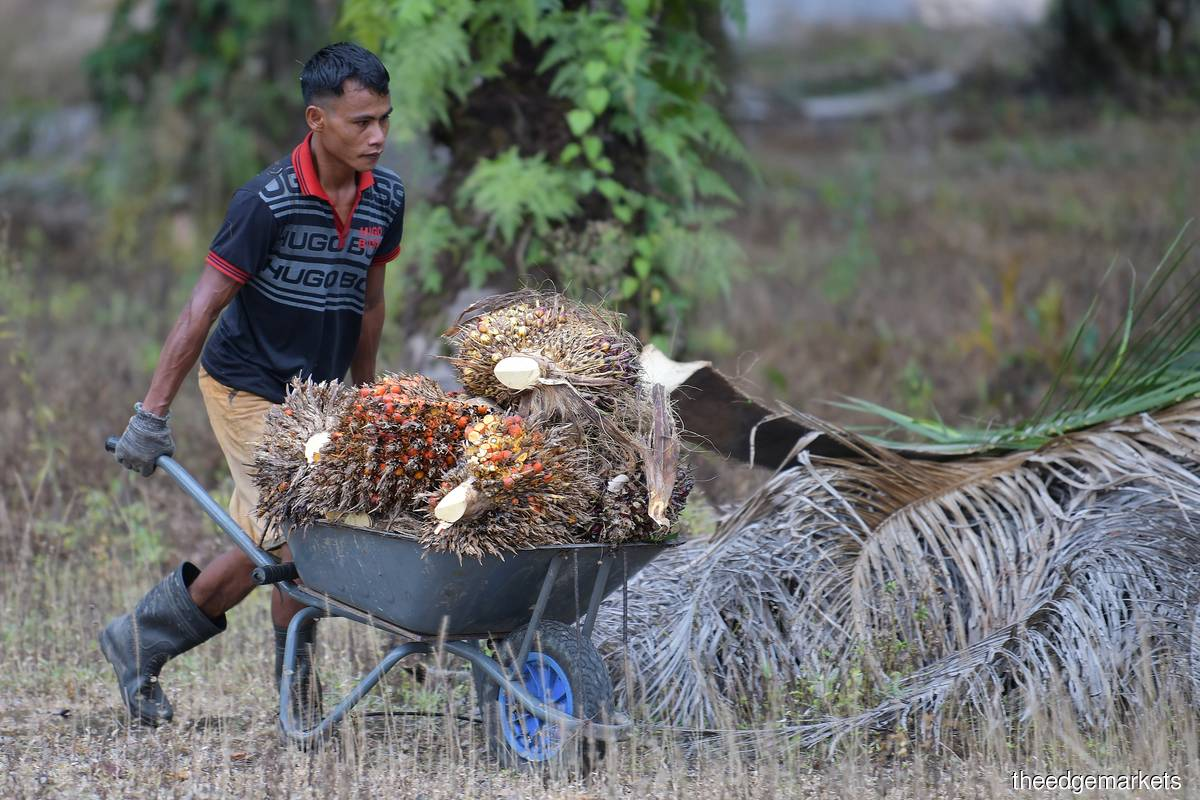Fertiliser and worker shortages to curb Malaysian palm oil output
 A hoped-for recovery in Malaysian palm oil output in the second half of the year is looking unlikely as the world’s second-biggest grower continues to struggle with shortages of fertilisers and workers.
A hoped-for recovery in Malaysian palm oil output in the second half of the year is looking unlikely as the world’s second-biggest grower continues to struggle with shortages of fertilisers and workers.
马来西亚棕榈油产量有望在下半年复苏的可能性不大,因为这个世界第二大种植商继续面临化肥和工人短缺的问题。
The price of fertilisers, which make up about 40% of palm oil’s production cost, surged over the last year on logistics snarl-ups and then the Russian invasion of Ukraine. Prices have retreated over the last few months, but many growers struggled to buy enough earlier in the season, curbing yields.
占棕榈油生产成本约 40% 的化肥价格在去年因物流混乱以及俄罗斯入侵乌克兰而飙升。过去几个月价格有所回落,但许多种植者在本季早些时候难以购买足够的产品,从而抑制了单产。
On top of that, government efforts to bring in more foreign plantation workers aren’t happening fast enough to revive production this year. The shortage has worsened to around 120,000 workers, compared with 36,000 before the Covid-19 pandemic, according to Jeffrey Ong, the president of the Malaysian Estate Owners’ Association, whose members are mainly small- and medium-sized planters.
最重要的是,政府引进更多外国种植园工人的努力进展得不够快,不足以恢复今年的生产。马来西亚房地产业主协会主席 Jeffrey Ong 表示,与 Covid-19 大流行之前的 36,000 人相比,短缺已恶化至约 120,000 人,该协会的成员主要是中小型种植园主。
“Oil palms will not reach their full potential because of the lack of fertiliser input in the past three years and the shortage of labour,” he said. “Even if you had money, you couldn’t get certain types of fertilisers.”
“由于过去三年化肥投入不足和劳动力短缺,油棕将无法充分发挥潜力,”他说。“即使你有钱,你也买不到某些类型的肥料。”
Plantation Industries and Commodities Minister Datuk Zuraida Kamaruddin said last month that palm oil production would rebound to 23 million to 25 million tons this year, up from a five-year low of 18.1 million tons in 2021.
种植业和商品部长拿督Zuraida Kamaruddin上个月表示,今年棕榈油产量将从 2021 年的 1810 万吨的五年低点反弹至 2300 万吨至 2500 万吨。
Ong is estimating it will be less than 19 million tons. The Malaysian Palm Oil Association, which mainly represents bigger listed companies, sees even lower output of 18.5 million to 18.7 million tons. The lower-than-expected output is likely to provide support for palm oil prices, which have fallen by around a quarter this month. Futures rose as much as 3.5% on 23rd June.
Ong 估计将少于 1900 万吨。主要代表较大上市公司的马来西亚棕榈油协会预计产量会更低,为 1850 万吨至 1870 万吨。低于预期的产量可能会为棕榈油价格提供支撑,本月棕榈油价格下跌了约四分之一. 6 月 23 日期货上涨了 3.5%。
Oil palm trees require a steady diet of nutrients and minerals. Malnourished trees produce less, which leads to lower oil extraction rates. An under-fertilised tree may grow fruit bunches weighing only 15kg to 18kg, compared with 25kg to 30kg from healthy trees, Ong said.
油棕树需要稳定的营养和矿物质饮食。营养不良的树木产量减少,从而导致石油开采率降低。Ong 说,施肥不足的树可能会长出仅重 15 至 18 公斤的果串,而健康的树则可长出 25 至 30 公斤。
Although the larger plantations were able to absorb higher fertiliser costs thanks to the rally in palm oil prices, many of them will struggle to ramp up production if there’s a prolonged delay in getting workers, said Datuk Mohd Nageeb Abdul Wahab, the chief executive officer of the palm oil association. The government had approved an intake of foreign labourers, but there are still complications in the source countries and it will also take time to train them, he said.
尽管由于棕榈油价格上涨,较大的种植园能够吸收更高的化肥成本,但如果长时间延迟招聘工人,其中许多种植园将难以提高产量,Datuk Mohd Nageeb Abdul Wahab 表示,棕榈油协会。他说,政府已批准引进外国劳工,但来源国仍存在复杂情况,培训他们也需要时间。
“Even if the workers come, I think we will only start seeing additional production by September,” Nageeb said. “We may miss out crops in the second half of the year, which we had thought we could get in full.”
“即使工人来了,我认为我们也只会在 9 月份开始看到额外的生产,”纳吉布说。“我们可能会错过下半年的收成,我们曾认为我们可以完全收获。”
Palm oil yields in Sarawak, which has the biggest planted area in the country, will likely be lower than expected over the rest of the year, according to Andrew Cheng, a veteran planter in the state. Despite purchasing fertilisers early, estates have been unable to carry out manuring since late last year due to the severe worker crunch, he said.
据该州资深种植园主Andrew Cheng,说,砂拉越拥有全国最大的种植面积,其棕榈油产量可能会低于今年剩余时间的预期。他说,尽管提前购买了化肥,但由于工人严重紧缩,自去年年底以来,庄园一直无法进行施肥。
“Even if foreign workers come in now, it will take one to two years to rehabilitate, plus there’s the high cost of labour and fertilisers,” Cheng said. “Oil palm plantations are not growing but shrinking due to areas being abandoned over the last few years.”
“即使现在外国工人进来,也需要一到两年的时间才能康复,再加上劳动力和化肥的成本很高,”Cheng说。“由于过去几年被遗弃的地区,油棕种植园没有增长,而是在缩小。”
